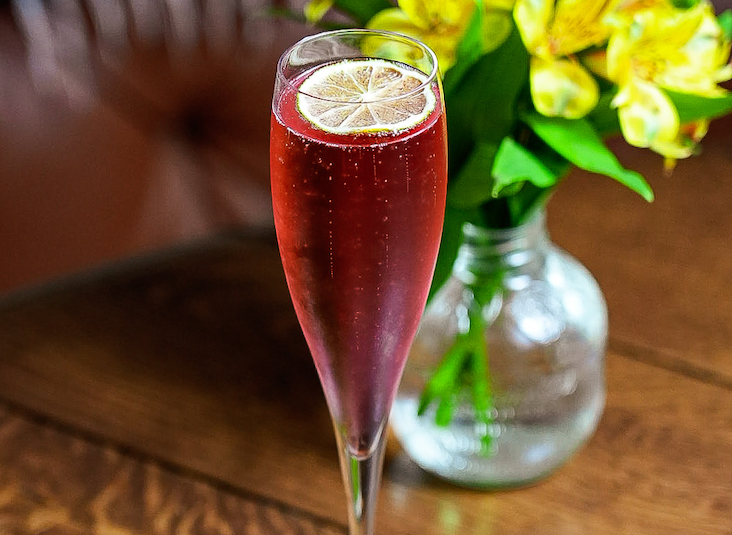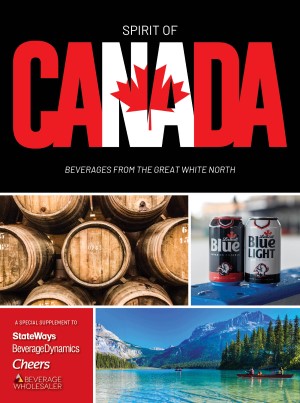Getting bar design right can be a challenge
Wanna start a fight? Start a discussion about bar design with a group of restaurant beverage professionals and see what happens. It’s a contentious topic that can bring serious folk to fisticuffs.
“I kid you not, I’ve seen people get so red-in-the-face angry about where a glass washer should go, or how many bartender stations are needed behind a bar, that I thought it would come to blows,” says David Commer of Commer Beverage Consulting and former T.G.I.Friday’s beverage director. “Listen, it’s a passionate subject because so much is riding on every little detail. Bar design affects people’s livelihoods and the viability of a business. It’s not a subject for the faint at heart.”
While there’s no such thing as the perfect bar, some are much easier to work than others. Every misplaced step the bartender takes can cost the bar operator money in lost productivity. Operational folks are passionate about the logistics of drink production how the workstations are configured, where equipment is placed relative to the workstation and how the inventory is merchandised. They are, after all, responsible for ensuring that the facility is designed to operate at peak efficiency; anything less potentially reduces revenue and service.
TROUBLE FROM THE START
The debate starts to boil over the moment the design team enters the discussion. They’ll contend that the bar is the central focus of the front of the house. The structure dominates the overall interior design and therefore falls within their purview. They are, after all, responsible for creating ambience and visually delivering on the promise of a restaurant’s concept. Where the bar is placed, the shape of the structure and traffic flow around the bar are crucial design considerations.
All overlapping decisions are potential flashpoints, with the design team frequently championing one point of view and the operations staff the opposite. That’s when upper management needs to intercede and strike a viable compromise.
“The management point of view really is the prioritized melding of both the operational and interior design perspective,” says Jean-Pierre Etcheberrigaray, vice-president of food and beverage for Intercontinental Hotels. “Add a few curves to a bar for effect and you could wind up adversely impacting drink production, delaying service, increasing labor costs, detracting from the ambience, snarling traffic flow or undermining the concept.”
Etcheberrigaray contends that subsequent decisions pale in importance to choosing the design and physical shape of the bar. “Nothing one does can overcome a poor choice in terms of design. The physical layout of the bar largely determines the placement of equipment, liquor displays and workstations, which in turn, dictates the speed at which bartenders can make drinks and provide hospitable service. A difference of three feet one way or another may not seem like much when you’re deciding where to position a glass washer, but it can add up to hundreds or even thousands of extra steps for bartenders a week. That’s a lot of wasted time.”
What design is the most operationally friendly? Which best allows bartenders to make drinks quickly and service the guests efficiently? Which layout is most visually appealing and provides the most efficient use of space? Tackling the debate head-on, we polled beverage veterans regarding their take on these issues.
THE SHAPE OF THINGS
Scott Young is a celebrated bartender trainer in North America. Having spent the majority of his life behind bars, the Vancouver native (he’s owner of extremebartending.com) knows a workable bar design when he sees it. “I think most bartenders would rather work a linear bar, one with a workstation positioned every 10 to 15 feet or so. This configuration allows unrestricted views of the guests and permits them to move freely behind the bar.”
Young adds that the most effective bar design is one that guides guests to where he wants them, instead of forcing bartenders to constantly run back and forth wasting steps and precious time. He points out that efficiency of movement is crucial even behind slower bars. The time wasted on drink production is always better spent on service.
David Sarner is a highly successful operator of such popular New York haunts as Gauguin at The Plaza Hotel, the Spy Bar, Chaos and Cain at Cabana in Southampton. “As a bartender I preferred working linear bars. So-called straight bars are easier to work quickly and maintain tabs on what’s going on. They have little impact on traffic flow and cost significantly less per square foot to build. Plus you can comfortably seat more guests per square foot at a linear bar than you can incorporating curves into the design.”
Another proponent of the linear bar is Mark Grossich, CEO of New York-based Hospitality Holdings, whose portfolio of NYC contemporary cocktail lounges include The World Bar in Trump Tower, Carnegie Club in CitySpire Centre and the Campbell Apartment in Grand Central Terminal. “In addition to being faster to work, linear bars afford bartenders with optimal face-to-face time with guests. From my point of view, there’s nothing more important than that.”
Commer, on the other hand, believes that oval bars are faster for bartenders. “It’s easier to survey what’s going on at an oval bar and provide outstanding service to the guests. The close proximity of workstations, equipment and inventory at an oval bar facilitates drink production and speed of service.”
Siding with Commer is Wayne Morris, director of operations for Associated Club Management, which operates eleven Midnight Rodeo and Wild West concepts throughout Texas and the Virgin Islands. “We believe oval bars are the most efficient use of space. In fact, in our high-volume, 25,000 square foot clubs we have five oval bars surrounding a ‘race track’ style dance floor with another oval bar in the middle of that.”
Several experts cast their lot with horseshoe bars, which includes all arced, or “U” shapes. Among them is Brian Jaymont, beverage manager at the newly opened JW Marriott Pass Resort & Spa in Tucson, AZ. An experienced operator, Jaymont’s depth of hands-on experience was heavily relied upon in the design of the new property, which features a slight horseshoe-shape for the showcase bar.
“We went with that design because it creates more working room behind the bar, which allows us to run more bartenders on busy nights. The arc in the bar top also provides additional overhang for equipment. With linear or L-shaped bars, a wide bar top makes it more difficult for bartenders to reach in front of guests, or reduces the working room behind the bar. From an aesthetic perspective, the curving lines of a horseshoe bar are far more interesting to look at.”
A ROOM WITH A VIEW
Until about 60 years ago, the classic linear or L-shaped bars in America and Europe all incorporated large mirrors behind the bar. Etcheberrigaray believes that the mirror is crucial to the design. Without them, guests seated at the bar can only watch what’s happening behind them by turning around on their stools. That puts their backs to the bartenders and that’s bad for business. Drop the mirror, doom the design.
“In addition, bartenders rely on that mirror to extend their field of vision and catch reorder cues without turning around,” says leading restaurant consultant Bill Main. From the patron’s perspective, Main believes the best bar shape is the oval or horseshoe. They both create a sense of privacy, while still allowing guests to scan the room easily. “People-watching is a great American pastime. Horseshoe bars have a high ‘see and be seen’ quotient.”
On a more pragmatic level, Main believes that curved counters tend to engage people, while straight edges tend to repel. “Customers gravitate toward curved kiosks in airports 20% more frequently.”
Sarner outfits his establishments with oval bars. He believes that they allow the clientele to move about more freely and check out the other patrons. When there’s free flow of movement, people feel much more comfortable in the space, which Sarner contends is one of the foundations of building a loyal clientele.
Grossich has built and operated cocktail lounges that featured all of the various bar designs mentioned. “In the final analysis, I think this discussion renders down to ‘form follows function,’ or more specifically, form follows the optimal floor/furniture plan for the space.”
So go ahead and advocate putting an oval bar in a square space, or a linear bar in a round space. You’ll catch an earful either way.
Robert Plotkin is the past president of the National Bar & Restaurant Association and author of Successful Beverage Management- Proven Strategies for the On-Premise Operator. He can be reached at 1-800-421-7179, or robert@barmedia.com
Bar Design At A Glance
Ill-devised layouts and poorly placed equipment can make bartenders struggle to perform their jobs in a timely and efficient manner. Poor bar design can result in delayed service and may also increase labor costs if one bartender isn’t able to effectively work the bar alone. The ramifications may end up costing lost sales for the life of the business.
Here then, is a scouting report from our experts on the operational advantages and disadvantages of the popular bar designs.
Linear Bars:
Most efficient design from a drink production perspective.
Allows for unobstructed vision of bar patrons.
Can typically be worked by one bartender in non-peak hours.
Design easiest to position equipment and workstations.
Typically requires less square footage to accommodate the same number of bar stools as other shaped bars.
Least interesting shape bar from a design standpoint.
L-Shaped Bars:
Design is easily incorporated into most floor plans.
Design allows for easy placement of equipment and workstations.
Can typically be worked by one bartender in non-peak hours.
Design obstructs line of vision — bartender standing at one end of the bar cannot see patrons seated at the other end, which may lead to delayed service.
Oval and Horseshoe Bars:
Afford guests seated at the bar an unobstructed view of the room.
Often challenging for bartenders to work — designs require constant movement on the bartender’s part to ensure bar patrons receive attentive service.
Designs are most labor-intensive requiring more bartenders to work during peak hours to provide uncompromised service.
Often challenging designs in which to position equipment and merchandise inventory. –RP




